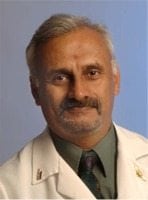
A study from the American Journal of Sports Medicine suggests that teens are four times more likely to suffer a concussion today than a decade ago. In essence, concussions are mild traumatic brain injuries induced by an impulsive force that results from an indirect or direct impact to the head, face, neck or somewhere on the body.
More than 80 percent to 90 percent of concussion patients present with a rapid onset of symptoms that resolve within five to seven days. But for a percentage of patients, further follow-up care may be necessary.
Parents of athletes should be on the lookout for symptoms of a concussion, especially because symptoms can sometimes be delayed. The warning signs are divided into four major categories: physical, cognitive, sleep and emotional. Physical symptoms can include headache, nausea, dizziness, visual or balance problems, fatigue or sensitivity to light and noise. Cognitive issues include difficulty concentrating or remembering and a sense of feeling foggy or slowed down. Sleeping too little or too much can also be a symptom, as can emotional irritability, sadness or nervousness.
There are immediate and long-term consequences for those who suffer a concussion. Immediate symptoms can develop into permanent brain injuries, memory loss, headaches, inability to concentrate, dizziness, irritability, fatigue, and even sensitivity to sound.
When players suffer a major blow, it’s important that they are checked out immediately. There is a testing protocol that should be administered called ImPACT, which is a 20 minute neuro-cognitive test. This test, which can only be administered by healthcare providers with specialized training, includes a thorough evaluation of multiple cognitive functions, such as attention span, memory, reaction time, non-verbal problem solving and response variability.
Connecticut is one of a few states that has passed a student athlete concussion law, which regulates how trainers handle players who might have a concussion. The law essentially says “when in doubt sit it out,” requiring trainers to remove players in question from a game and not send them back in.
The primary goal in managing concussed athletes is always getting them normalized and back to activities and school. With appropriate follow-up care, these athletes will be back into the swing of things in due time.
For more information about the Hartford HealthCare Rehabilitation Network, please visit our website.

